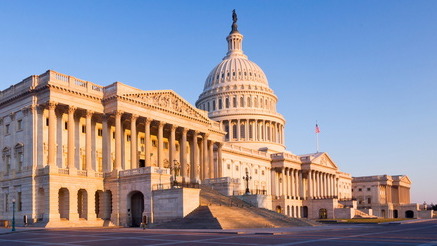
The Real Estate Roundtable (RER) wrote to the Treasury Department this week, urging guidance to ensure the One Big Beautiful Bill (OB3) Act’s restored 100 percent bonus depreciation provision is successful in spurring real estate investment, job creation, and economic growth. (Letter, Oct. 17)
Background
- The Tax Cuts and Jobs Act of 2017 capped taxpayers’ ability to deduct their interest expense on business debt. At the same time, the law created an exception that allows real estate businesses to fully deduct their interest expense if they make a “real property trade or business (RPTOB) election.”
- Taxpayers who make the RPTOB election are subject to the alternative depreciation system and ineligible for bonus depreciation.
- By modifying the business interest limitation rules, the OB3 Act made it easier for property owners to fully deduct their business interest and qualify for bonus depreciation. However, the legislation did not expressly clarify that existing property owners could revoke or reverse a prior RPTOB election.
- Guidance is needed to ensure taxpayers’ ability to change a RPTOB election and claim the full benefit of the bonus depreciation provision. (Letter, Oct. 17)
Why It Matters
- The restoration of 100 percent expensing for capital expenditures, including tenant and nonresidential property improvements, is among the most significant provisions in the OB3 Act.
- The Tax Foundation estimates bonus depreciation will boost long-run GDP by 0.6 percent and generate the equivalent of 145,000 jobs. (Tax Foundation, July 4)
- In the absence of additional tax guidance, however, many taxpayers will not qualify for bonus depreciation with respect to their property improvements.
RER Recommendations & Perspective

- Ample precedent and authority exist for Treasury to clarify that, in light of the changes made in the OB3 Act, taxpayers can amend and change their prior RPTOB elections. (See Revenue Procedure 2020-22, issued following passage of the CARES Act of 2020)
- With clear implementing rules, bonus depreciation “will facilitate the modernization and repurposing of real estate assets, including underutilized office buildings, shopping centers, hotels, and mixed-use properties,” the RER submission stated.
- “Small businesses will benefit from the ability to immediately expense their leasehold improvements,” the letter continued. “The capital expenditures spurred by expensing will create new spaces for commerce to flourish, boost property values, and strengthen communities by increasing local tax revenue critical for public services like schools and law enforcement.”
The submission from RER President and CEO Jeffrey DeBoer was addressed to Treasury Assistant Secretary for Tax Policy and Acting IRS Chief Counsel Kenneth J. Kies. RER’s Tax Policy Advisory Committee (TPAC) is continuing to review and develop recommendations for Treasury with respect to the implementation of the monumental tax legislation signed into law this summer.
























